DNAbsolute - A column-free DNA extraction buffer
DNAbsolute provides a fast and safe method to isolate DNA from a wide range of sample types. Its high sensitivity makes it a solution of choice when working with small & precious samples.
Idylle is the tool development partner for researchers. Idylle co-develops, manufactures and delivers research tools, all designed by academic researchers.
Idylle’s mission is to enable scientists to distribute their research tools, reagents and consumables to laboratories around the world.
FakirSlide are ready-to-use coverslips patterned with micro- and nano-structures to induce diverse, well-controlled topological cues on live cells or planar model membranes.
Made of borosilicate glass, they are compatible with all types of advanced microscopies and provide a solid support allowing for long-term experiments.
Fakirslides substrates have been successfully used to manipulate membrane morphology of living cells and supported lipid bilayers, and observe effects of curvatures on membrane protein dynamics, cytoskeletal reorganization and cell migration.

Based on a newly-developed nanostructuration technique called soft nanoimprint lithography, FakirSlide pushes the resolution boundaries and makes available to researchers a diverse panel of reproducible micro to nano-scale topographies of various aspect ratios to better investigate key cellular responses to specific membrane topologies.
FakirSlide provides ordered arrays of structures with high control over their shape, diameter and periodicity. They were specifically designed to induce robust & consistent membrane curvatures and facilitate data analysis.
made of a high-quality synthetic silica layer, the Fakirslide surface is directly functional for supported lipid bilayers without the need for harsh cleaning or hydroxylating pre-treatments.
A technology developed by Laura Picas (IRIM UMR9004), Adrian Carretero (IES UMR5214), Raissa Rathar (IRIM UMR9004 & IES UMR5214) & David Sanchez (IES UMR5214) – Montpellier, France
Stencell are ready-to-use silicon chambers that you can stick and remove for cellular confinement or dynamic assays, such as migration or wound-healing.
Stencell was designed to standardize your experiments and minimize the consumption of reagents.
It is very helpful when you are working with super expensive reagents or very rare cell lines, and when you want to test various experimental hypothesis.
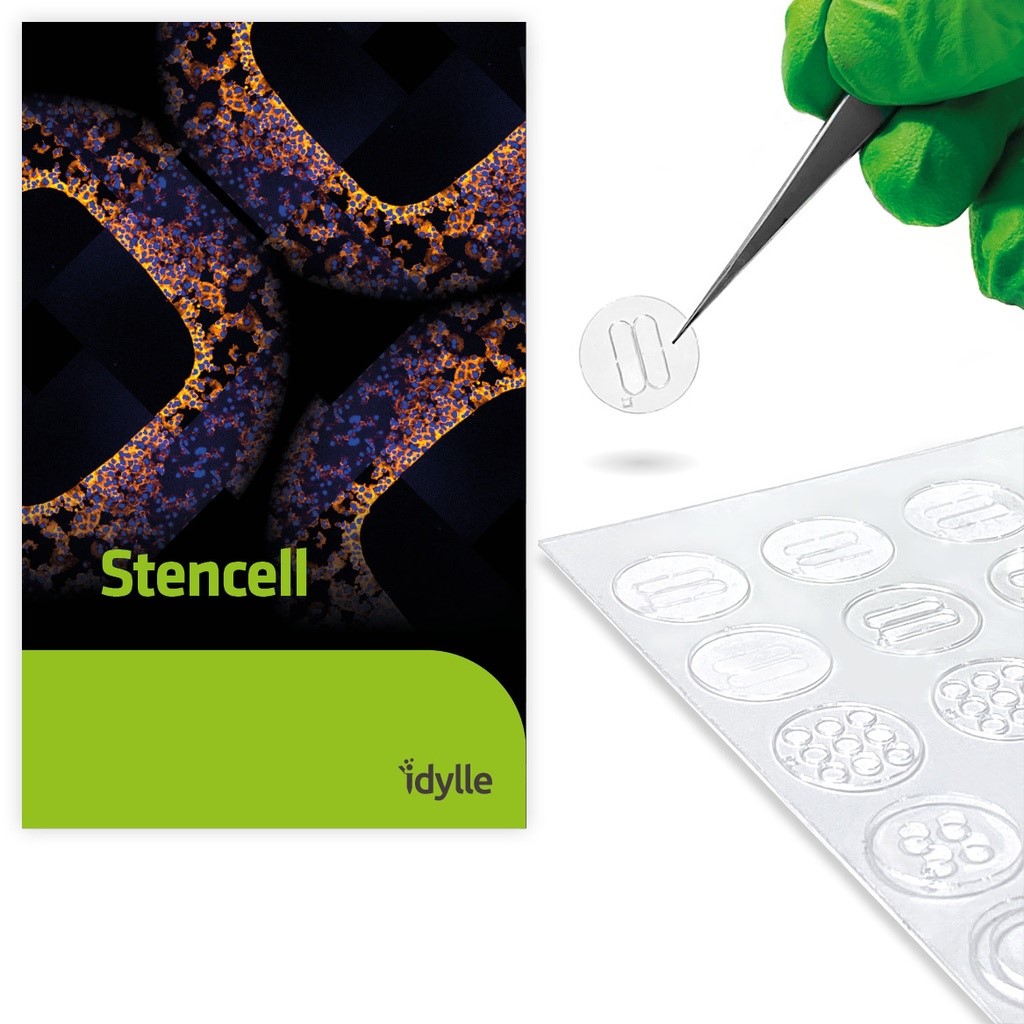
Stencell was designed by Vincent Studer, Pierre-Olivier Strale and Aurélien Pasturel.
Stampwell U-Shape are 3D-printed stamps designed to easily create U-bottom wells in any type of hydrogels such as agarose, alginate, phytagel, methycellulose, …). This forms an array of non-adherent wells in which cell suspension can be loaded to watch cell aggregate in individual 3D cell structures.
The same stamp with flat bottom wells has been designed to be able to better image the spheroids.
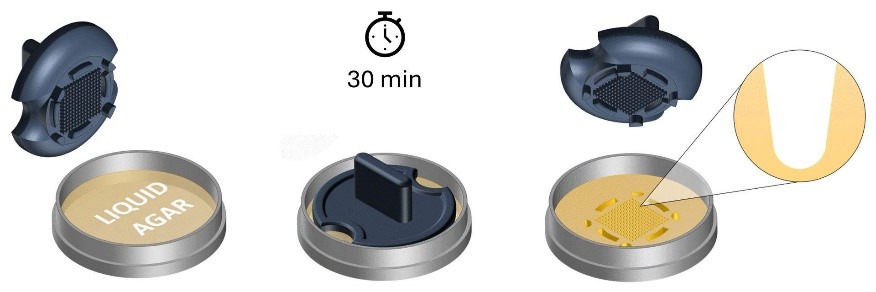
Developed by: Guyon, J., Andrique, L., Pujol, N., Røsland, G. V., Recher, G., Bikfalvi, A., & Daubon, T.
SpheroTribe is a concentrated polymer-based solution that increases the medium viscosity, therefore favouring cell-cell contacts. It offers a simple method to generate homogeneous 3D cell structures with increased control over their shape, minimizing variability between samples and improving the consistency of your downstream experiments such as migration/invasion assays, immunostaining, drug screening or in vivo implantation experiments. SpheroTribe is particularly useful to boost aggregation when working with challenging cells.
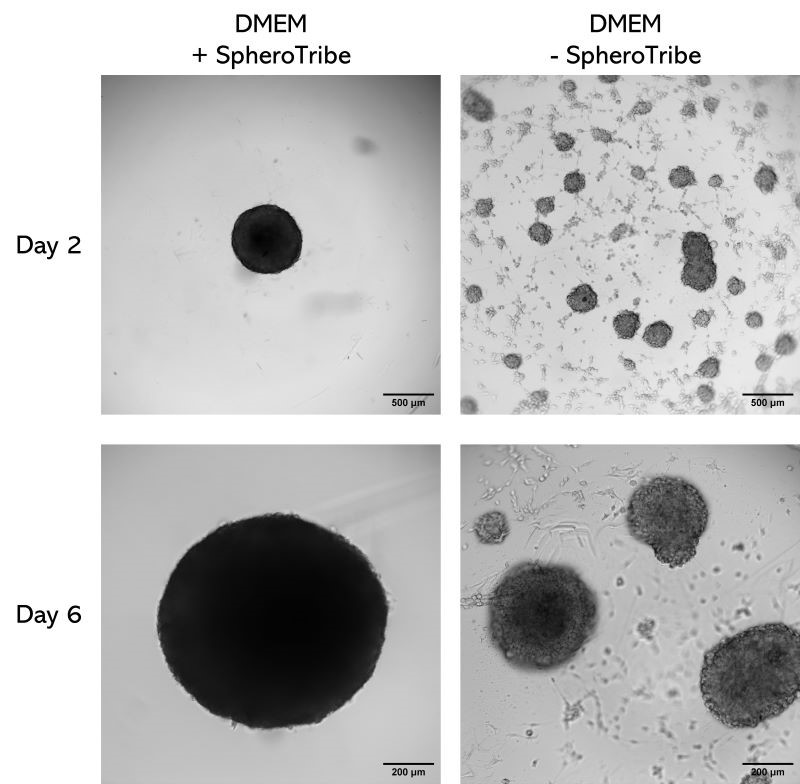
Developed by: Gaëlle Recher and Camille Douillet (CNRS – Université de Bordeaux, France)
AgarSqueezer is an innovative cell culture system to grow and image cells under different confinement levels within a physiological rigidity range (1-150 kPa). The confinement system is based on molded agarose pillars, which enables an instant & homogeneous compression on cells, to study their response to short and long-term confinement up to 10 days.
Easy to recover coverslip with cells for subsequent molecular analysis: FACS, qPCR, Western-Blot, Immunofluorescence (possible in situ)
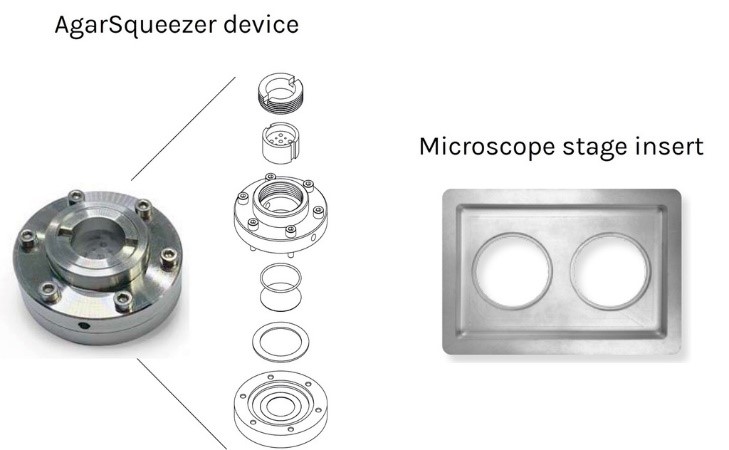
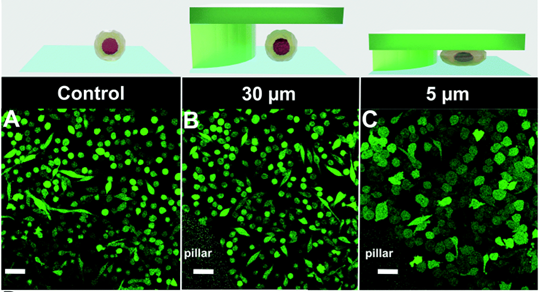
Developed by: Audrey Prunet, Gilles Simon, Hélène Delanoë-Ayari, Véronique Maguer-Satta and Charlotte Rivière.
We gladly support you by keeping you updated on our latest products and the developments around our services.